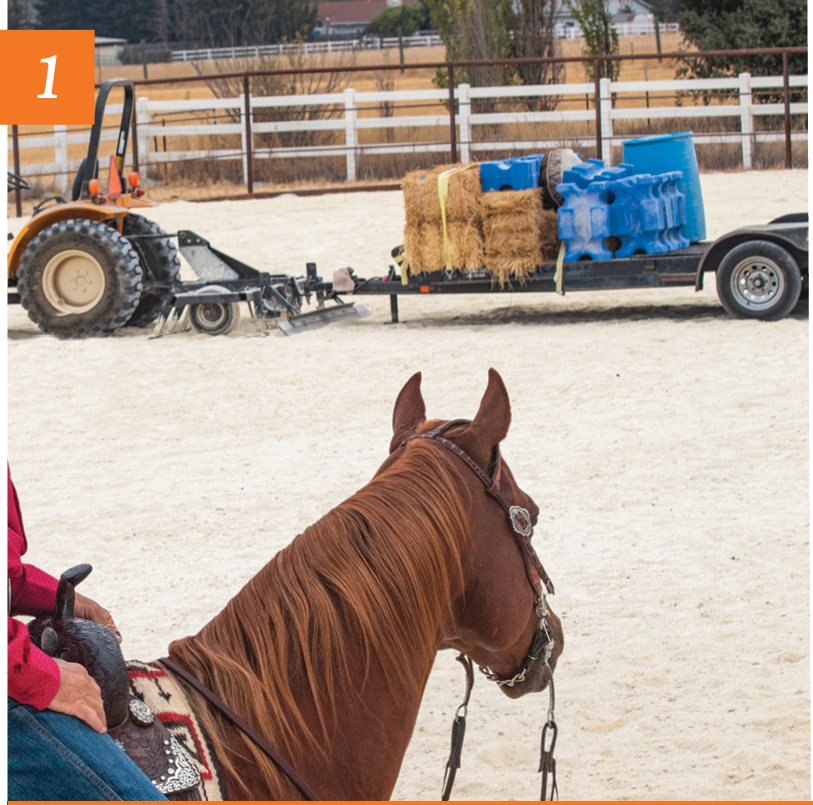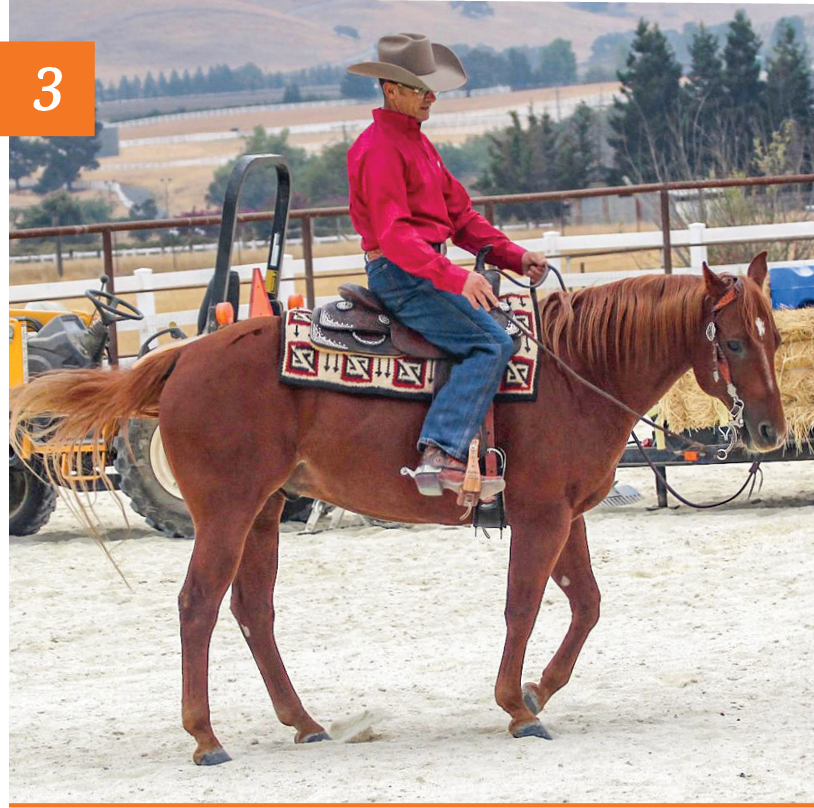Your horse gets distracted. He perks his ears forward, directing them at the object he’s noticed or is worried about. If you’re like many riders, you respond by trying to reassure him, pushing him forward to investigate. If he sees it up close, you reason, he’ll realize it’s not a big deal.
[READ MORE: Refocus Your Horse After a Blowup]
As he balks and won’t go forward, his ears and eyes narrowed in on the distraction, you become more frustrated. You urge him forward; he’s not having any part of it. Finally you give up. It’s either not worth it or the fight has escalated too far past the point of being productive. The distraction is now a big deal. He continues to eyeball the object every time he passes or as it comes into sight.
Here you’ll learn how to change your horse’s distraction from a fight to a relationship-building experience—it really can happen. I’ll share how to empathize with his anxiety, and then provide a step-by-step approach to refocus his attention on the lesson or trail ride at hand.
[READ MORE: Understand Your Horse’s Behavior]
Shift the Paradigm
For you, anxiety happens when you worry about the future. You stress about an unfinished work report that’s due soon, how you’ll pay for your kids’ college education, or having money for retirement. These things keep you up at night as you plan for the long term.
Unlike you, your horse lives in the present. He’s focused on what’s happening right here and now. He worries when he sees (or thinks he sees) something immediately ahead of him that might be a threat: a flying tarp, an animal, a tractor that’s parked out of its usual spot, or any number of new experiences. Unlike him, you can rationalize or take immediate action to resolve your anxiety, whereas he zeroes in on his. He gets distracted, trying to figure out if he needs to flee or not.
When your horse gets distracted, instead of asking him to face it head on, take it as a data point. “Oh, that worries you?” is such a different perspective than “Oh, that? That’s not that big of a deal.” It treats the distraction not as a problem to be resolved, but an opportunity to earn his trust. You can check in with him, letting him know you’re aware of the worry and then refocus him. This teaches him to look to you when he’s worried or sees something out of the ordinary rather than going to his flight instinct.
Here are five steps to improve the experience.
Step 1: Notice the Distraction

As you approach the scary presence and your horse gets distracted, acknowledge that he sees something. In Photo 1, my horse’s ears are perked forward as he checks out the tractor and trailer. Your best course of action is to let him continue moving, but instead of directing him straight at what he’s looking at, aim to get his attention.
Step 2: Bring Him Back

As you ride forward use your inside rein to softly turn him in, as in Photo 2. Circle him quietly away from the object. Watch for him to flick his inside ear back and toward you.
The circle-away approach creates space for your horse to process what the object is and whether it’s a threat without the pressure of moving toward it. You’ve shown him empathy and acknowledged his anxiety. Continue to circle back around until you again face the distraction. Don’t let your horse go toward it just yet and fight the urge to push him.
Step 3: Circle Back

In Photo 3, my horse is listening to me. His ear is flicked back toward me, and he’s no longer focused on the distraction. Continue to circle even though you have his attention. When he can circle softly and doesn’t need to glance at the object, let him straighten out and head toward the distraction. He’ll stay relaxed even as he gets closer.
Step 4: Go for It

When he’s ready, let him approach to investigate. You can see in this photo that he’s moved closer on his own. There’s slack in my rein and my horse’s body is relaxed. His ears are forward here, too, but unlike the first encounter, I’m not worried about it. His mind is with me as we check it out together.
Step 5: Put It Into Practice
In the arena and other open spaces, you have plenty of room to circle. On the trail, modify this exercise to fit your situation. Make tighter circles or back up—anything to direct his attention back toward you without adding to his anxiety. Continue to take your time with this drill and let him take his.
You don’t need to wait for a scary distraction to practice this; it can be done with anything that pulls his attention away from you. This exercise simply brings him back.
Watch Warwick!
Click here to watch Warwick Schiller’s how-to video for this distracted horse exercise.

Australian clinician and reiner Warwick Schiller lives in Hollister, California. He’s an NRHA reserve world champion and represented Australia at the 2010 and 2018 FEI World Equestrian Games. He solves horse problems by changing the rider’s perspective. Learn more about Schiller and find his clinics, books, and videos at warwickschiller.com.






